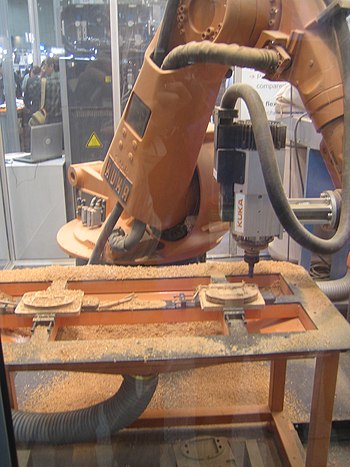More Than Machinery: Developing the Human Side of Manufacturing

Is it time to replace robots with humans?
No, that's not a typing error, it's a question that more and more companies seem to be asking, as the human side of manufacturing fights for focus in a world of automation.
It's not just small-scale local artisans, either; mass-produced vehicle maker Toyota is also now considering the efficiency advantages of a larger skilled human workforce.
Man vs. Machine?
Although it's tempting to pit one against the other (even if only for sci-fi fantasy reasons), the future is likely to be one that blends both the robotic and human side of manufacturing.
We wrote last month about it being only a matter of time before the limitations on commercial drones are lifted. Combined with the promise of 3D printing technologies and the general trend towards automation for many decades, there are plenty of arguments for a machine-heavy future.
But the reality, as Toyota points out, is that efficient manufacturing requires the best of both worlds; human and machine working in sync.
There are two main reasons to return to a more balanced production process. For one, an over-reliance on automation drags human workers down to the level of the robotic parts of production, removing common sense and an ability to improvise. At the moment - and probably the forseeable future - even the most advanced production systems can't replicate the complex human reasoning that adjusts to assembly issues, fluctuating resources, or a thousand other complications that can arise.
Secondly, the drive for increased quality while remaining cost-effective efficiency is a concept that requires some input from knowledgeable, skilled human workers. When reviewing processes for long-term improvement that continues to pay back via better products and fewer defects, being able to call upon the expertise of those who do the job is vital.
Robots can't yet offer flexible reporting or weigh all the alternatives, including the seemingly crazy ideas that often prove valuable. That takes an individual or team that not only knows the production process inside out, but who also have the skills and intelligence to devise and implement improvements.
Consumers Demand Quality
At the other end of the spectrum, there's also the consumer perspective to consider.
A sizable segment of buyers is demanding a return to more verifiable production methods for a variety of reasons, including economic and ethical considerations. Whatever the drive behind the movement, there's now room again for businesses to set themselves apart by their methods of manufacturing, rather than merely the cost that feeds in to the final price.
From this angle, companies can use their skilled human workers as a unique selling point. Our second point above becomes even more important, as the people involved in production are a visible, vital part of the marketing process, as well as the manufacturing.
Taken from either angle this demonstrates a sound basis for a return to not only human manufacturing, but also locally-made products. As we discussed last year, this might well help to fuel a wider 'Made in the USA' movement that creates more jobs and products closer to home. We certainly don't want to rid ourselves of robots, but we're always excited to see skilled people making a difference in the production process!